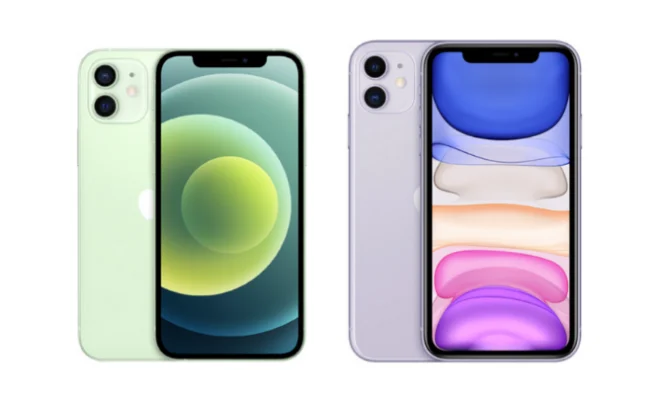iPhone 12 vs. iPhone 11: All the differences

The smartphone market has always been a battleground for innovation and prestige, with Apple’s iPhones leading the charge on multiple fronts. With the introduction of the iPhone 12, Apple fans and tech enthusiasts are eager to know how it compares to its predecessor, the iPhone 11. In this article, we’ll delve into all the differences between these two smartphones to help you make an informed decision.
1. Design:
The most apparent difference between the iPhone 11 and iPhone 12 is their design. The iPhone 12 features a sleek new design that harks back to the classic flat-edged iPhones with its edges made of aerospace-grade aluminum or stainless steel. On the other hand, the iPhone 11 featured a more rounded design made of aluminum and glass.
2. Display:
The iPhone 12 showcases a vastly improved Super Retina XDR OLED display with a resolution of 2532×1170 pixels in contrast to the iPhone 11’s Liquid Retina IPS LCD display with a resolution of 1792×828 pixels. The upgrade in display provides sharper visuals and more vibrant colors, elevating user experience.
3. Weight and Dimensions:
The dimensions have also changed; the iPhone 12 is slightly smaller at 146.7 x 71.5 x 7.4mm and lighter at just 164 grams as compared to the iPhone 11’s dimensions of150.9 x75.7 x8.3mm and weight of194 grams.
4. Connectivity:
Another significant update in the iPhone 12 is its compatibility with 5G network speeds, promising faster download speeds and improved connectivity compared to the iPhone 11, which only supports LTE.
5. Processor:
Under the hood, both devices differ in processing power, with the iPhone 12 boasting Apple’s latest A14 Bionic chip, whereas its predecessor utilizes the A13 Bionic chip. The A14 Bionic chip provides marginally better performance and higher energy efficiency than the A13.
6. Cameras:
While both models feature a dual 12MP rear camera setup, the iPhone 12 camera offers Night mode and Deep Fusion on both lenses (wide and ultra-wide) and supports HDR video recording with Dolby Vision. The iPhone 11’s camera, however, only supports Night mode and Deep Fusion on the wide lens.
7. MagSafe:
One of the unique features of the iPhone 12 is the introduction of MagSafe technology. It allows for easier attachment of compatible accessories like wireless chargers and wallets, which is not available for the iPhone 11.
8. Price:
When it comes to price, there’s a noticeable difference between the two devices. The iPhone 12 starts at $799 for its base model (64 GB), while the price for an iPhone 11 has now been reduced to $599 (64 GB).
In conclusion, these differences highlight that Apple continues to push boundaries with its latest offering in the iPhone 12. From an enhanced design and display to improved connectivity and new features like MagSafe technology, the upgrades are apparent over its predecessor, the iPhone 11. Ultimately, your choice between these devices would depend on your preferences and budget; however, it’s evident that upgrading to an iPhone 12 promises a more exciting and technologically advanced user experience.






